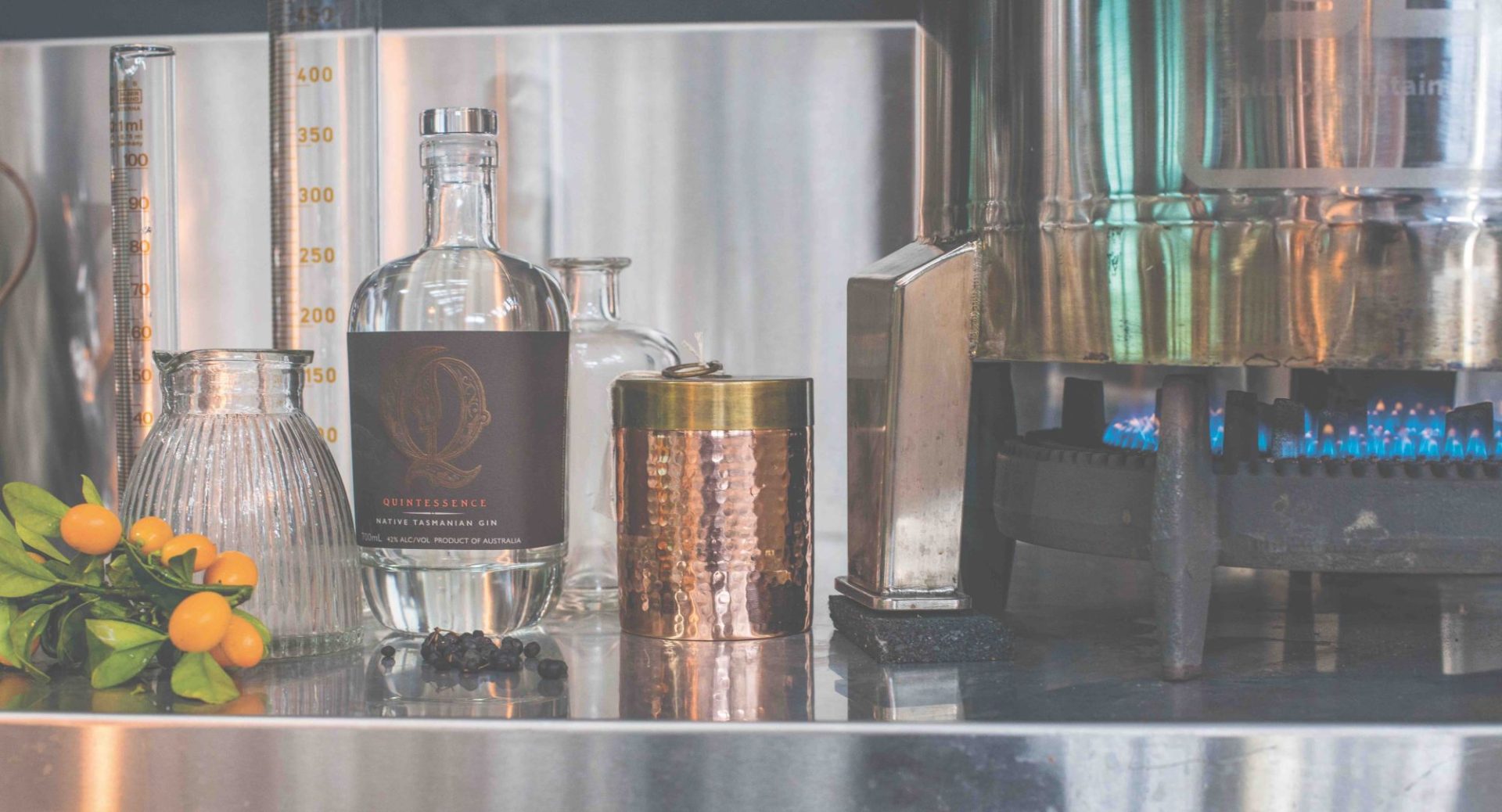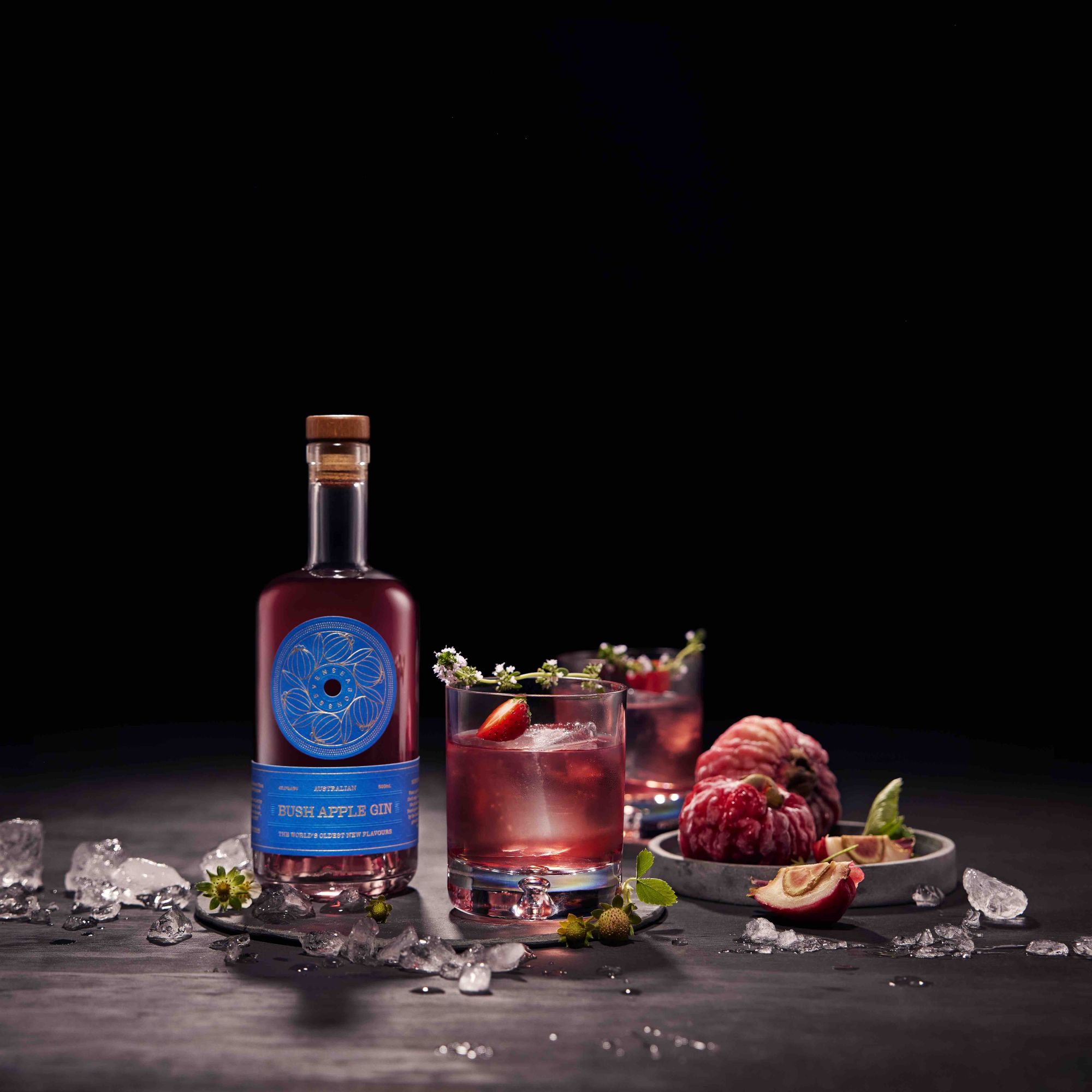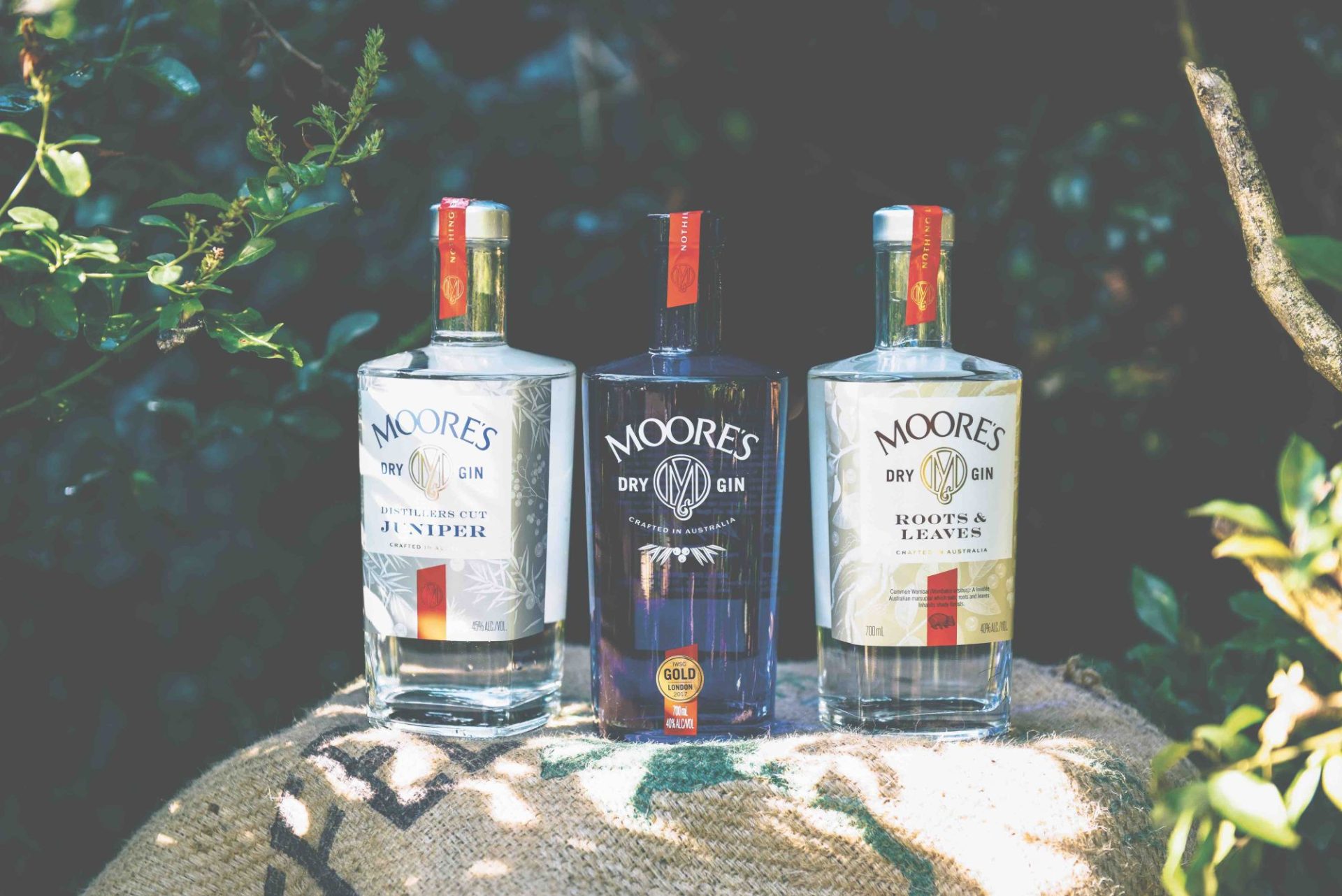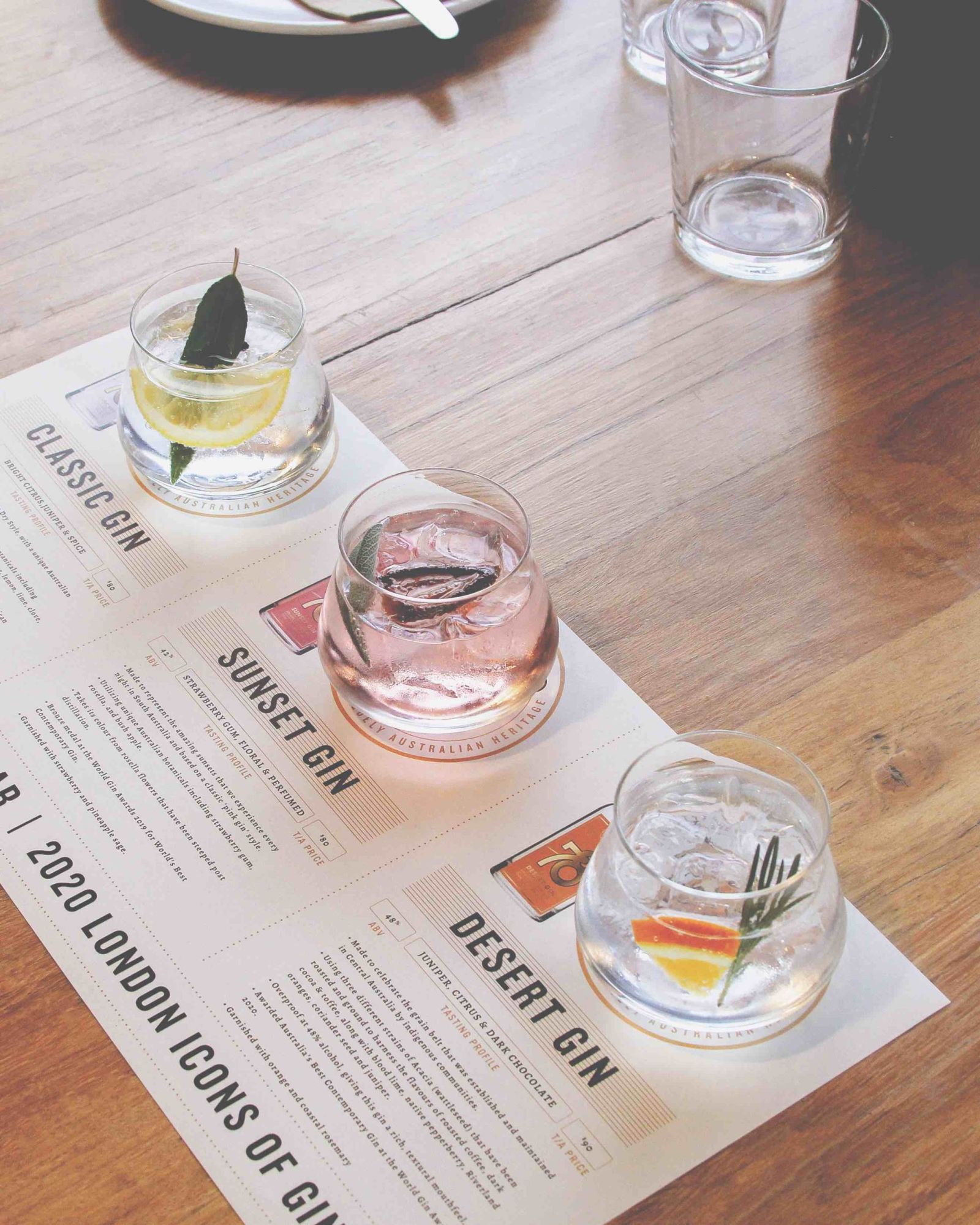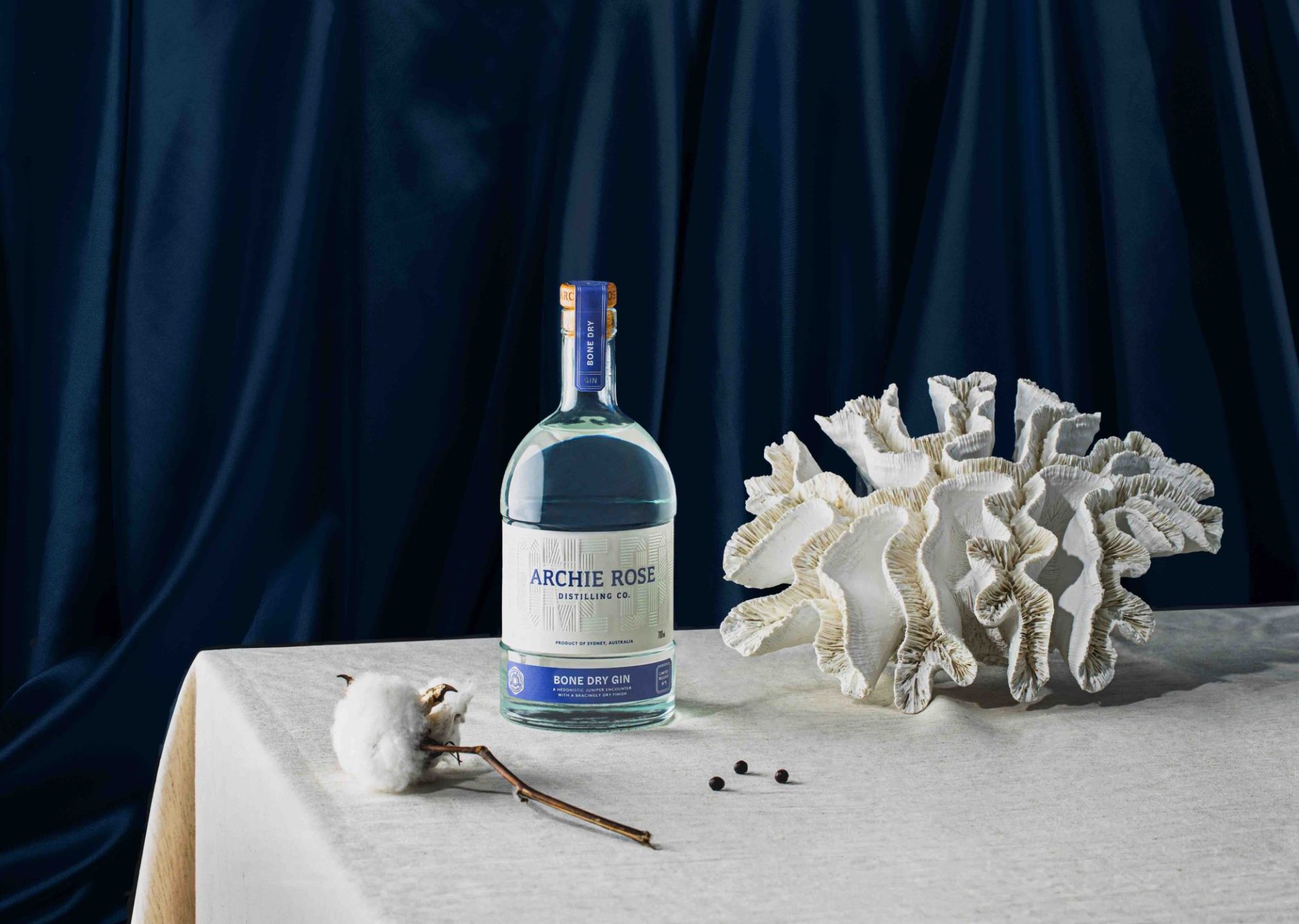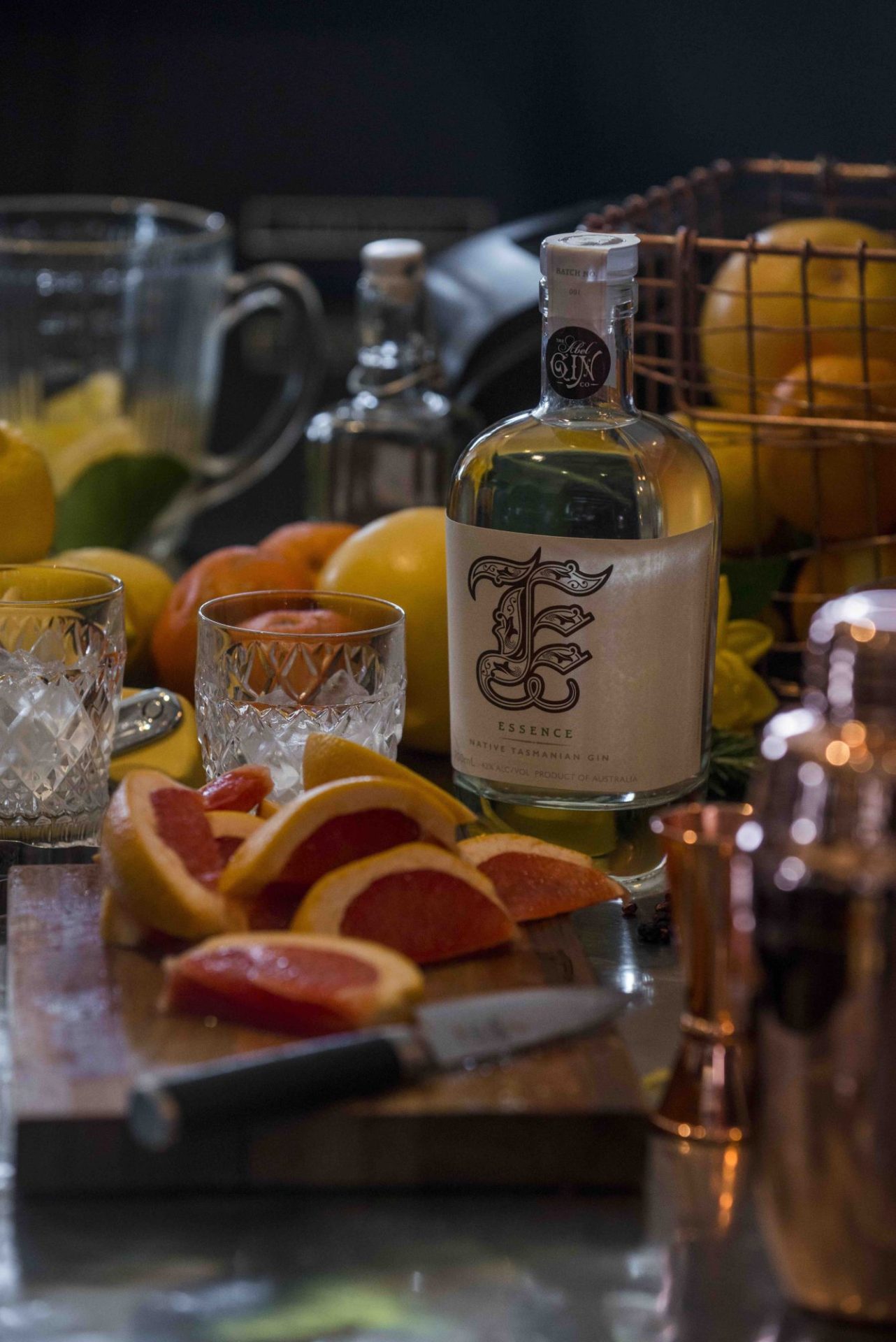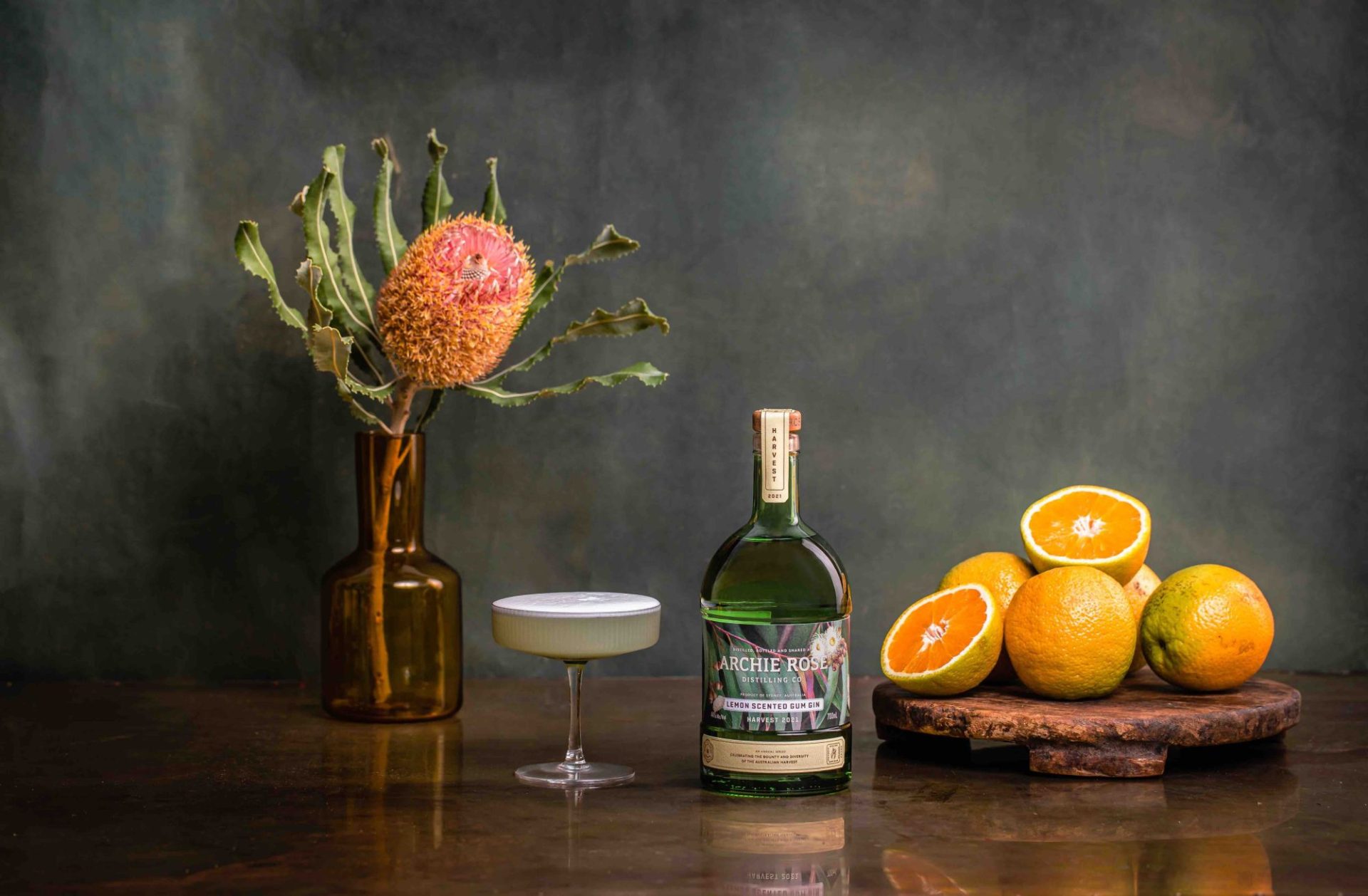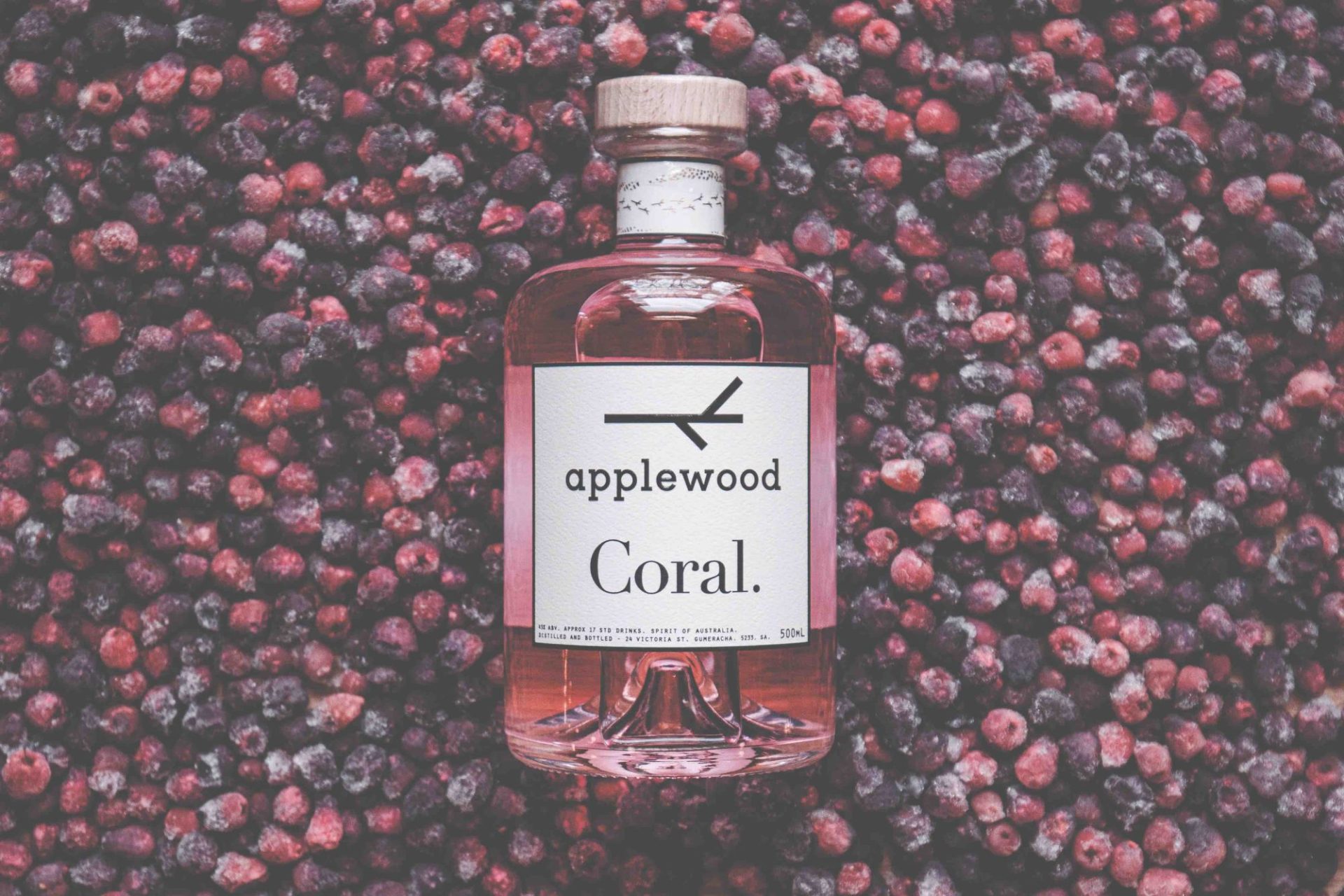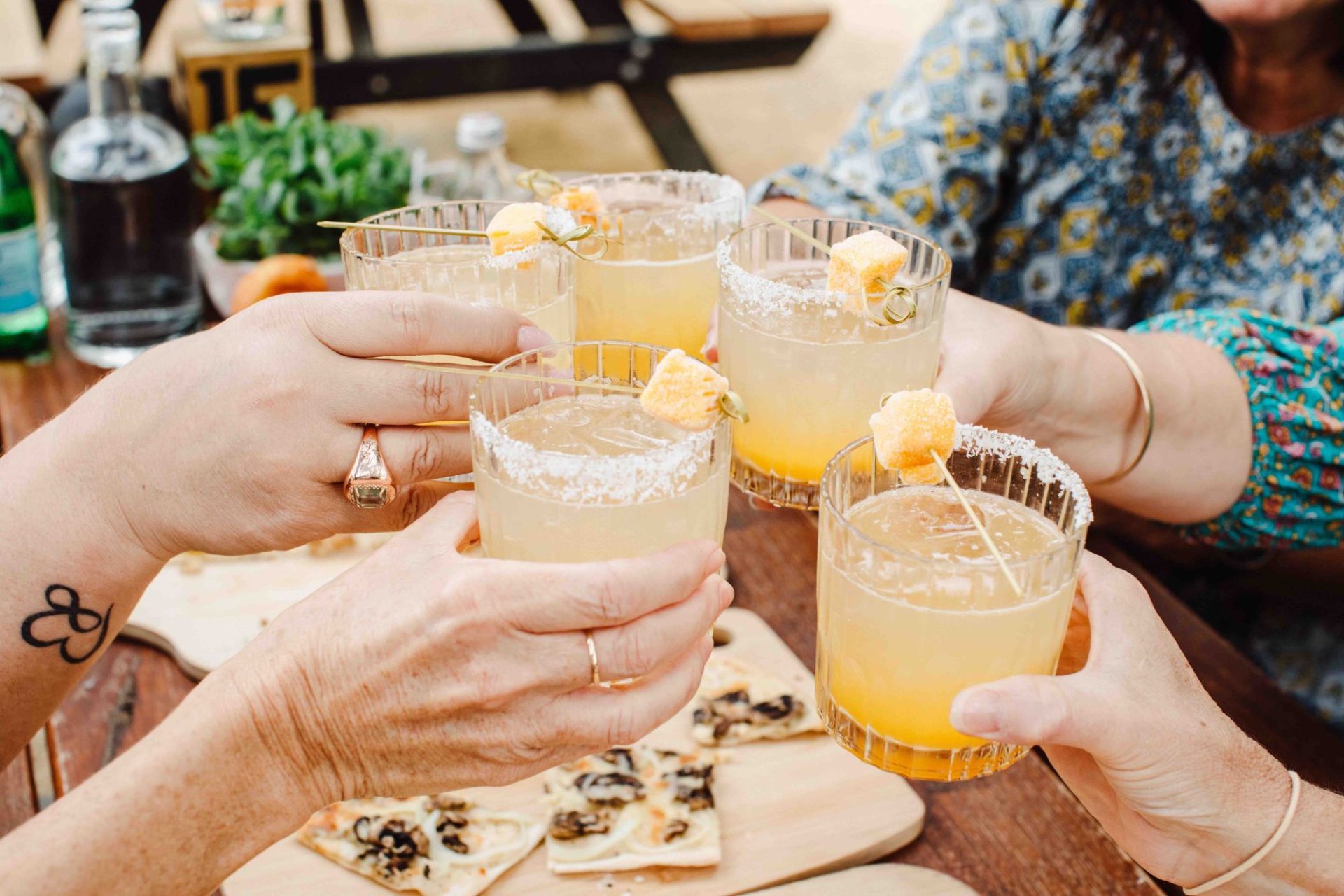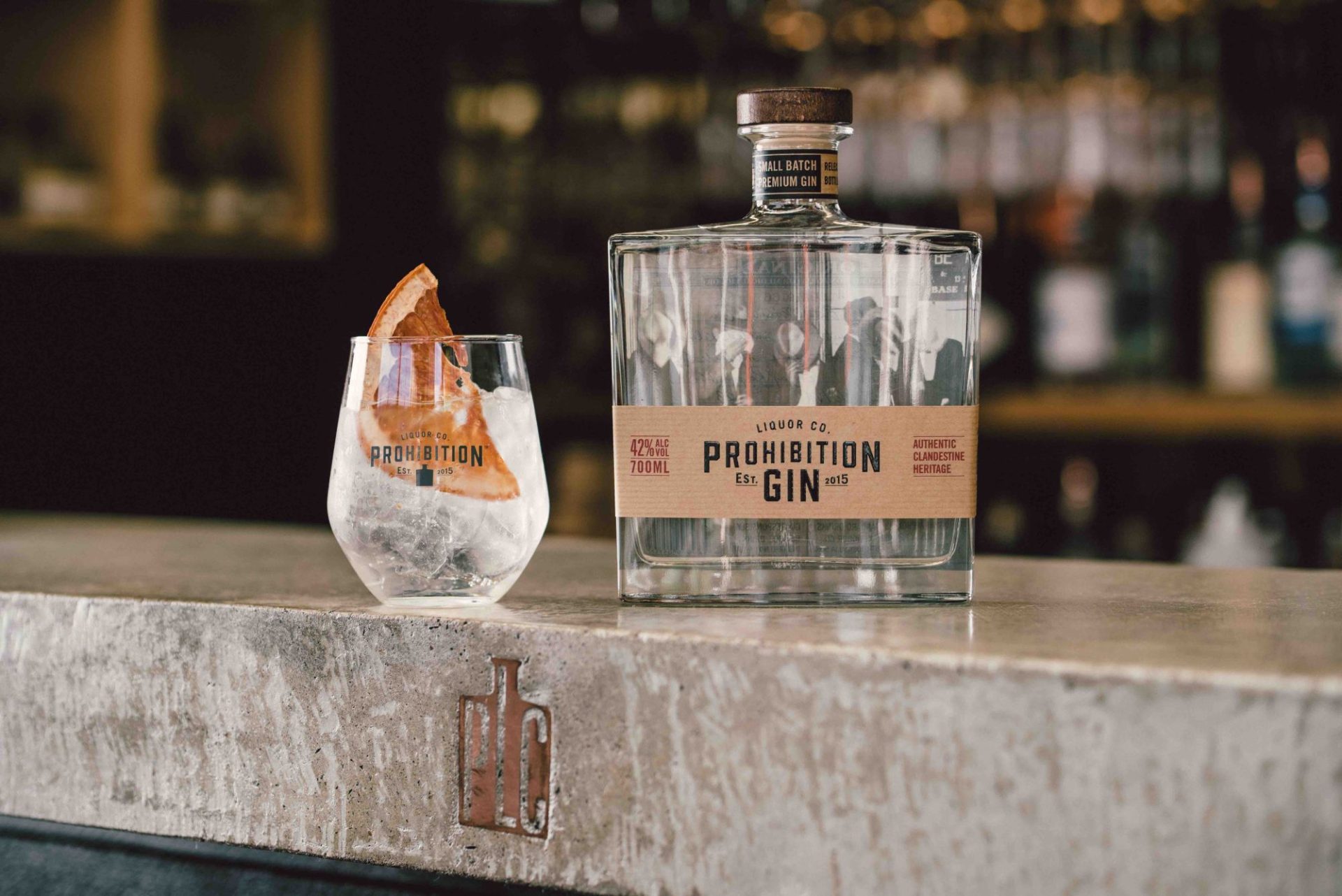Gin explosion
Australia has gone from a standing start to one of the world’s most exciting gin nations in the blink of an eye, and so much more is on the horizon. These are thrilling days for gin fanatics; here are some of the many exceptional ones worth trying.
Written by Ken Gargett
10 June 2023
Juniper is the basis for gin but, from there, the range of botanicals, spices, herbs and other ingredients that have been used is staggering – everything from green tea to baobab trees, turkey breasts to truffles, even motorcycle parts (specifically, Harley Davidson).
Australia has had a few oddities, too, much of which has come from the fantastically innovative Four Pillars. Remember when they first released their delicious Bloody Shiraz Gin? Everyone took notice. Gin was a clear spirit, but this, this was a vibrant neon purple.
I have no doubt the gin explosion would have happened without Four Pillars, but they certainly gave it the initial momentum it needed. Others have broken the mould, too. Applewood springs to mind. And Seven Seasons, who turned to pesky green ants. (Sounds like karma to me.)
Still, distilleries continue to emerge across the land, undoubtedly finding gin more lucrative than great rum or whisky. Case in point, Husk Distillers on the beautiful northern NSW coast are focused on creating the best agricole rums in the land, but it is their incredible Ink Gin that pays the bills.
The pursuit (and production) of exceptionally good gin is no longer seen as some sort of gimmicky adventure or part-time experimenting.
Australian gins are now internationally recognised as some of the best on the planet – proved by the fact that not so long ago, pre-COVID, all the barman at the fabulous Helsinki speakeasy Trillby and Chadwick wanted to know when he heard my accent was how the hell he could get his hands on some Four Pillars.
At the recent World Gin Awards, which includes Icons of Gin and the Gin Hall of Fame, recognition went to the likes of the Never Never Distilling Co, Distillery Botanica, Four Pillars and, a recent addition to the scene, North Queensland’s Devil’s Thumb Distillery. Cape Byron Distillery and Archie Rose were also both highly commended.
Drinks International magazine also featured both Four Pillars and Never Never Distilling Co in their top-ten gin brands trending worldwide. To the credit of Four Pillars co-founder Stuart Gregor, they never fail to acknowledge the efforts and importance of their fellow Aussie distillers. In turn, I could not count the number of distillers who have paid tribute to the support they’ve received from the Four Pillars team.
And so, here’s my list of the notable distillers making their mark – and making Aussie gin great.
Kangaroo Island Spirits
We all saw the catastrophic bushfires devastate Kangaroo Island, the residents and the businesses just a few years ago, so supporting this distiller is something we should all do. The fact they make terrific gin is a bonus.
Kangaroo Island Spirits (KIS) recently completed a $3.5-million renovation, which is helping bring tourists back to the island. It will also make KIS the largest gin distiller in South Australia.
Their Wild Gin includes such botanicals as boobialla (native juniper), Eau de Cologne mint (also known as bergamot mint), lime zest and pink peppercorns. A delightfully exuberant style with a smooth, sweet core and notes of citrus. Definitely worth a look for a martini. The team describe it as the wildest gin ever. There’s a lot of competition for that title, but it’s a contender.
Archie Rose
This Sydney distiller, one of the country’s most popular, now offers an array of different spirits, but it’s their gins for which they’re famous. A recent release is their limited edition Bone Dry Gin.
One for fans of citrusy notes in their spirits, clean and long, and with heaps of attractive juniper appeal. Happy to enjoy this on the rocks or in a range of cocktails. Again, that combination of flavours and dry finish make me think of a classic martini, but it might be even better with your favourite tonic. Great stuff for a distillery not yet a decade old.
Four Pillars
So much has already been said about this pioneering distillery from Healesville in Victoria going carbon neutral. All I can add here is that if you enjoy gin, or even just quality spirits, you need to be familiar with these guys. So many groundbreaking gins, but do not neglect their classics.
Their Rare Dry Gin is the original – more bling than you’d find at a rappers’ annual conference.
On top of the obligatory juniper, they incorporate lemon myrtle, oranges, coriander, green cardamom, cassia, star anise, lavender, angelica and pepperberries. Balanced, delicious, complex. Perfect for a gin and tonic.
A more recent introduction to the range is the Olive Leaf Gin, which includes cold-pressed olive oil and leaves from three different species of olive trees, plus an array of other botanicals such as rosemary, bay, macadamia nuts and lemon myrtle.
The idea came from a gin they made in 2015 in collaboration with Santamania in Madrid, Cousin Vera’s Gin – one of my all-time favourite Four Pillars gins. There’s a lovely herbal note, and it offers something rarely noted in gin – a most seductive texture.
Finally, their Chardonnay Barrel Gin. Love the texture and complexity that time in barrel gives these gins. Think ginger, spices (nutmeg and cinnamon), glacé lemon and a hint of stone fruit. For me, this might get a single ice cube, but otherwise, just sip it.
Distillery Botanica
Distiller and gin pioneer Philip Moore has achieved the enormous honour – for himself, Botanica and the entire Aussie gin industry – of being named the first Australian to be inducted into the Gin Magazine Hall of Fame.
A business in herbs was a great foundation for Philip, who established Distillery Botanica fifteen years ago. Among his stellar products are Moore’s Gins. The trio of releases is hard to separate; all are immensely appealing.
Moore’s Dry Gin uses eight botanicals and is surprisingly delicate. Yes, all manner of cocktails, but be careful not to overwhelm the gentle and elegant citrus notes. For me, sipping solo works. Distillers Cut Juniper, on the other hand, explodes from the glass.
This gin screams to be matched with your favourite tonic. Full of life and bright junipery notes. A superb gin.
Finally, Roots and Leaves Dry Gin. Features a mix of roots and leaves – shocker, I know – grown in the Botanica garden. Think kaffir lime, lemon verbena, mandarin, and curry tree leaves with ginger, turmeric, angelica, and galangal roots.
Attractive citrus, almost grapefruit notes. Quite powerful. Complex. For those more adventurous with cocktails than me – a classic G&T or martini simply can’t be beaten – this will provide endless options.
Seven Seasons
Daniel Motlop is well known to AFL fans as an exceptional footballer. Daniel has founded a premium spirits operation and, as an Indigenous Australian, has the enormous advantage of unparalleled knowledge of local ingredients. His business also provides extensive support to Aboriginal communities, so it’s good to be able to enjoy great gin while helping out.
His Green Ant Gin has been a massive success, and every sip makes me feel like I’ve finally got one over on those fearsome insects. Another gin that incorporates boobialla – perhaps, in time, all Aussie gins will take this path – as well as pepperberries, eucalyptus and lemon myrtle.
The key flavour here is the lovely bright citrus notes, something we can thank the ants for. There’s also an appealing green leaf note that adds to the complexity. Love it.
The Bush Apple Gin is a bit of a cavalcade of flavours with red fruits, juniper and some herbs. (I’ll confess I’ve never tried a bush apple, so I have no idea if it accurately reflects the taste, but I suspect it most probably does). The colour, a gentle pink, adds to the appeal.
78 Degrees Distillery
Another distillery yet to approach its teenage years but already making serious waves, this time from the Adelaide Hills, which assures it of an excellent range of ingredients to consider. Like almost all gin distillers, the team exhibits terrific innovation. A recent chocolate gin for Easter sounds brilliant.
Their Sunset Gin has good intensity, and the name alone immediately transports you to a relaxed drink in a tropical location as the sun slowly sets. Red fruits are becoming more prominent in many gins around the world, and we see those characters here, but it mixes with a lovely freshness, almost a sea-breeze note. A fine gin for sipping but its only limit is your imagination.
Desert Gin might suggest a spirit that is bone dry and, while that might be so, the name reflects the source of some of the botanicals used, such as wattleseed (three discrete species, in fact.) There’s also juniper, blood limes and Riverland oranges.
The richness of the wattleseed gives the team characters of toffee, roasted coffee and dark cocoa – not typical gin characters, but the result is delicious. Big and bold, so ideal for so many cocktails, but again, I’m happy with mine as a sipper.
Cape Byron Distillers
If this distillery is not immediately familiar to you, Brookie’s gins might be. The name comes from the fact Eddie and Will Brook were raised on Brookfarm in the Byron Bay Hinterland. Anyone familiar with this magical part of the world will know the wide range of potential botanicals to work with from here.
Their Brookie’s Byron Dry Gin contains 25 botanicals, 17 local, and has the seemingly inevitable citrus flavours with juniper. (If you’re spotting pine in your gin, this is usually from the juniper, which provides a wonderful freshness.) Slicing a kaffir lime to accentuate the flavours could be overkill on the citrus, but it works for me.
Brookie’s Byron Slow Gin is a version of the old English sloe gin, which seems to be a rather derided style. With usually only half to two-thirds of the alcohol level compared to regular gin, it has a place, especially when done well. Exuberantly flavoured with notes of plum and florals, plus toasty touches. No surprise about the plums – it’s based on the rare, local Davidson’s plum.
Mac, a wattleseed and macadamia liqueur, is perfect for a late-night sipper or when richness and boldness are needed for a cocktail. The toffee, honeycomb and nutty notes here are delicious.
Applewood
Applewood is another Adelaide Hills distillery that has made a serious name for itself with innovative gins. They’ve dabbled with a green ant gin, too, but also use sandalwood, saltbush and much more.
Their Coral Gin is immediately appealing with its gentle pink hues, but that will never be sustainable if it’s not a good gin. It is. Forget the old, hoary stories about pink gins – this is the future.
Clean, with a lingering dry finish and a lovely oyster-shell character running through it. Sure, ideal for cocktails – the colour will appeal to many bartenders – but don’t be afraid to use it with an ice cube or two. Or a summer G&T. Love the lifted fragrances it offers.
Abel Gin
Natalie Fryar is the Ash Barty of Aussie gin. How many people leave a career when they’re at their peak? Nat is a much-loved and highly regarded superstar sparkling winemaker. (Tassie is perfect for her, with the many superb wines she created for Jansz, and the wine world was stunned when she stepped away). Now, gin.
The aim is a gin that reflects the Tasmanian wilds, infused with a citrus blast. And, like her sparklers, her gins can only be created in our southern state. Essence is a fresh, bright and vibrant style. Brimming with citrus, it’s just the gin for a good G&T. Yes, there are speciality tonic producers in Tasmania, but I think you’d be safe to go with your favourite, wherever it might hail. (Although saying that might cost me my visa when next I head south.)
Quintessence is, for me, a step up in a style that appeals. This is more complex, richer, and more intricate. This is the gin I’d love to use in a martini. (I should say, the gin I am using in a martini.)
As close to a sipping gin as you could wish for. Nat talks about curling up in front of a fire with this gin. Easier said than done when you come from Queensland, but I know exactly what she means. Delicious.
Now, take your pick.




